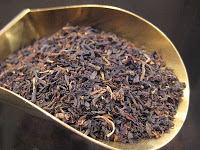Maggie Secara's Blog, page 9
March 20, 2013
Kathleen Bartholomew: How to Write
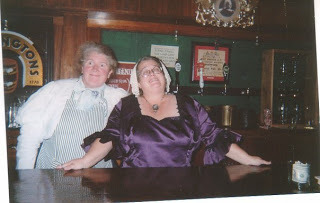 Kathleen and Kage at the Great Dickens Christmas FairThis week's guest is one of my favorite people in the world. Not that I'm not fond of all my guests, but I've known Kathleen Bartholomew (Nell Gwynne's: On Land and At Sea, with Kage Baker) for a good long time. We both spent a huge chunk of our lives pursuing a common goal — making the English Renaissance come alive on weekends in the spring in Southern California. But that's not important right now. What's important is that Kathleen knows. I mean, she just knows. Here, see what I mean.
Kathleen and Kage at the Great Dickens Christmas FairThis week's guest is one of my favorite people in the world. Not that I'm not fond of all my guests, but I've known Kathleen Bartholomew (Nell Gwynne's: On Land and At Sea, with Kage Baker) for a good long time. We both spent a huge chunk of our lives pursuing a common goal — making the English Renaissance come alive on weekends in the spring in Southern California. But that's not important right now. What's important is that Kathleen knows. I mean, she just knows. Here, see what I mean. 
Maggie Secara (Hi, Maggie!) invited me to make a guest appearance here on her blog some months ago. I was quite flattered and agreed at once, confident of several things: Maggie is a great hostess and would allow me just about any goofiness I came up with; My font of ideas would overflow into a huge fund of potential topics in the days leading up to today's post; And when I finally sat down to write, my mind would become a vast, echoing blank.·
All of which have happened. Self-fulfilling prophecy, perhaps, but I believe it is also one of the classic inescapable cycles of creation that afflict writers. The need to write is a compulsion on the order of major psychosis for most of us wordsmiths: the constant pressure to write, to compose, to tell the story is not an exterior one. But there are plenty of other pressures that come to bear on writing, from your outside. It's the tension between the two that facilitates — nay, requires, demands — writing.
But those pressures don't make writing easy, only vital to accomplish. And if you fail, your head explodes.
 You want to write — you need to write — but that same fascination with the plot of the story in your head applies as well to nearly every thing else around you. The local news (Gatorade doping!), advances in telepathic communication (there were some this week ...), the latest scandal on the international scene (dying dictators, resigning pontiffs, the latest Prince to lose his trousers) — it's all irresistibly compelling. A story starts running in your mind for everything you see. It's all totally fascinating, and when it goes awry (which happens for a while every freaking day) your creative powers are running amok in your head like a duck hound with ADHD.
You want to write — you need to write — but that same fascination with the plot of the story in your head applies as well to nearly every thing else around you. The local news (Gatorade doping!), advances in telepathic communication (there were some this week ...), the latest scandal on the international scene (dying dictators, resigning pontiffs, the latest Prince to lose his trousers) — it's all irresistibly compelling. A story starts running in your mind for everything you see. It's all totally fascinating, and when it goes awry (which happens for a while every freaking day) your creative powers are running amok in your head like a duck hound with ADHD.If you don't pick a theme and write it down, your head explodes.
At the same time, there are the actual exterior pressures. These are almost all forms of deadlines, which is a word that means something specifically, personally ghastly to a writer. The deadline is the place where — if you cross it — you're dead. The deadline is a straight line running parallel to your life line. Like the perfect lines of Aristotle's geometry, they are never meant to actually converge. They only look as if they do, at that point where a story is finished and handed off; but in reality, only your lifeline keeps running for the psychic horizon. And somewhere along the way, another idea is born, and a new deadline rises from the earth to pace your lifeline ...
If they are ever permitted to converge, your head explodes.
So there you sit, with these two opposing pressures rising up inside and outside you. To give in and write is a genuinely visceral delight. When it really works well, it's out-of-body bliss. But the need to meet the deadline, whatever it is, is also insisting you're working on the wrong story, or the plot is not resolving quickly enough, or you need something new and exciting to power the tale on to the end. You need a new McGuffin, or a plot twist, or a protagonist you can stand. You need 1500 more words. You need to kick the machina and see what deus falls into the hopper.
And in the meantime, the pressure is building on both sides of your skull, and a gravity point source like a black hole is trying to form in your mind, ready to turn you inside out.
This is where no other writer's advice will help you. There are endless classes and workshops available to every writer to teach the necessary basics of writing — but when you have expanded your vocabulary, and exhausted all your personal fantasies (We all do it. Don't be ashamed, just get them out of your system), and learned when grammar matters and when it doesn't ... when it comes down to What am I going to say?, no one else can help you. They can only tell you what works for them, and you have to experiment with every suggestion to figure out what actually gets you sitting still and writing.
Some writers lock themselves away in monastic privacy — others, believe it or not, need to write in the midst of domestic chaos, like a teenager doing their math homework. Some use silence, some need music. Maggie herself (Hi, Maggie!) uses a writing tiara, whose metaphysical reality I am not qualified to judge. It works, that's all that matters. Alcohol is quite popular with writers, as are drugs; but unless you already possess a blazing world-class talent, those will only dim your light to extinction.
The late Kage Baker, my sister whose work I am trying to continue, played Free Cell at the beginning of every writing session. She had to play it until she won a game. She was instantly derailed by conversation, but required music played very loudly; usually one specific album per book, over and over and over ...
I am still figuring out what I need to be able to write. Games aren't it. Music isn't it. Peace and quiet don't seem to do it; I suspect I need the threat of imminent disaster to get my compositional arse in gear. I need to stop imagining my muse — who is male, by the way — sitting behind my right shoulder looking pious and sad and supportive: I need to outfit him with a leather jacket and a whiskey flask and a menacing look. [Possibly a motorcycle and an urge to discover America? –M.]
Maybe I need more coffee, or more fibre. Maybe I need a cushion; scented candles; new headphones and a good copy of Beethoven's 8th. I'm not the tiara type, but maybe I need a nice pair of handcuffs ...
Whatever it is, I'll find it. I found it in time to finish Kage's Nell Gwynne II, and to start several stories. And when I do identify it once and for all — whenever any writer finally figures out what absolutely does it for them — a wonderful thing happens.
Your head explodes. But it explodes in narrative and plot and simile and resolution, like a nebula, a birthing, or a new star being lit. And the universe is full of light, and it's the clearest light ever seen, and the world, your world, flows away under your fingers as neatly as a string of beads ...
 And that's how you write.
And that's how you write.
And who's Kathleen Bartholomew when she's at home?
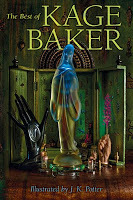
 Kathleen Bartholomew is the sister of the late science fiction and fantasy writer, Kage Baker. Like Kage, Kathleen grew up semi-feral in the Hollywood Hills, was educated by nuns, and ran away with the Renaissance Pleasure Faire at an early age. She has lived in various enchanted localities up and down California since then, and in most of the centuries between the 13th and the 23rd & 1/2. She presently lives once more in Los Angeles, with another sister, two cats, a Corgi and a parrot.
Kathleen Bartholomew is the sister of the late science fiction and fantasy writer, Kage Baker. Like Kage, Kathleen grew up semi-feral in the Hollywood Hills, was educated by nuns, and ran away with the Renaissance Pleasure Faire at an early age. She has lived in various enchanted localities up and down California since then, and in most of the centuries between the 13th and the 23rd & 1/2. She presently lives once more in Los Angeles, with another sister, two cats, a Corgi and a parrot.Kathleen was Kage's research assistant, sounding board, and collaborator in the worlds Kage created in her 12-year writing career. This left her with a vast inchoate background in history, biology, folklore, domestic engineering and bar-tending. When Kage died in 2010, she left Kathleen notes, outlines, 2 partial novels and several short stories. She also left Kathleen a stern deathbed geas to finish the work and get it out there to be read.
Which is what Kathleen is doing now - the first finished novel was published in January: Nell Gwynne's On Land and At Sea; or, Who We Did On Our Summer Holidays. The first short story - a tale from Kage's Company universe, entitled "Pareidolia", will be coming out in a collection of Kage's stories later this year. More are in production. Kathleen also writes an almost-daily blog about writing, Kage Baker, and whatever else crosses her mind - Kathleen, Kage & The Company. It can be found at http://kbco.wordpress.com/ It provides the interested reader with a window into Kage and Kathleen's minds, and into the gestalt mega-mind their brains formed over the years.
Published on March 20, 2013 01:00
March 13, 2013
The Authentication of Harriet Jacobs
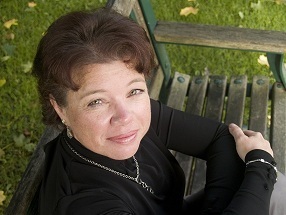 Some research is more challenging than others and can't simply be done by tracking down leads on the Internet.
Some research is more challenging than others and can't simply be done by tracking down leads on the Internet. This week, Darlene Williams shares the details of one determined woman's effort to tell her story and another's dogged devotion to verifying and authenticating that narrative more than a hundred years later.

In 1861, Incidents in the Life of a Slave Girl was published in Boston. Edited by L. Maria Child, the author is noted as “Written by Herself” and signed Linda Brent.
On the frontispiece, there are two quotations:
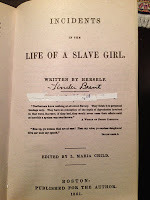 “Northerners know nothing at all about Slavery. They think it is perpetual bondage only. They have no conception of the depth of degradationinvolved in that word, SLAVERY; if they had, they would never cease their efforts until so horrible a system was overthrown.” --A Woman of North Carolina
“Northerners know nothing at all about Slavery. They think it is perpetual bondage only. They have no conception of the depth of degradationinvolved in that word, SLAVERY; if they had, they would never cease their efforts until so horrible a system was overthrown.” --A Woman of North Carolina“Rise up, ye women that are at ease! Hear my voice, ye careless daughters! Give ear unto my speech.” --Isaiah xxxii.9
An appendix to Incidents in the Life of a Slave Girlwritten by Amy Post dated October 30, 1859, Rochester, N.Y., states:
“The author of this book is my highly-esteemed friend. If its readers knew her as I know her, they could not fail to be deeply interested in her story.
"…her appearance was prepossessing, and her deportment indicated remarkable delicacy of feeling and purity of thought.
"After the labors of the day were over, she traced secretly and wearily, by the midnight lamp, a truthful record of her eventful life.”
Lydia Maria Child, in her introduction, asserts:
“I have not added any thing [sic] to the incidents, or changed the import of her very pertinent remarks. With trifling exceptions, both the ideas and the language are her own. I pruned excrescences a little, but otherwise I had no reason for changing her lively and dramatic way of telling her own story.”
Child also claimed in her introduction that she knew and trusted the author who wrote under the pseudonym “Linda Brent”.
What follows is a gripping narrative of a young slave girl stalked by a lecherous master well into womanhood, who spared no effort, devious machination, or expense to claim his ultimate goal: subjugation and possession of Linda Brent. Linda Brent, for her part, endured tribulations almost beyond belief, to prevent her master from victory and protect her two young children, fathered by another man.
 Harrier Jacobs/Linda Brent
Harrier Jacobs/Linda Brent(Wikimedia Commons)For decades, the authorship of Incidents in the Life of a Slave Girlremained in dispute. Accepted scholarly opinion, in particular that of Yale historian John Blassingame, claimed the true author was Lydia Maria Child, while others maintained it was a work of fiction. The events recounted in the narrative are so fantastical as to be unbelievable. The lack of dates, names and places in the narrative merely added weight to the theory it was a work of fiction, as did anti-slavery laws that prohibited slave literacy.
So, who exactly was Linda Brent? Professor Jean Fagan Yellin, who had read Incidents in the Life of a Slave Girl while working on her dissertation, spent over two decades of her life pursuing the answer to this question. In her quest for the truth, Yellin, obtained letters written by a Harriet Jacobs from amongst Child’s papers. When she compared the contents of the letters and the narrative, she felt sure she had found the answer.
Linda Brent was Harriet Jacobs, a slave born in Edenton, North Carolina.
The next six years were spent working in collaboration with researcher, George Stevenson, to authenticate Harriet Jacobs as the author and subject of the slave narrative, Incidents in the Life of a Slave Girl.
In 1987, Harvard University Press published Yellin’s edition of Incidents, endorsed by Professor Blassingame, who reversed his earlier conclusion based on Yellin and Stevenson’s research. One hundred twenty-six years after publication, Harriet and her life were vindicated.
Incidents in the Life of a Slave Girl is the single extant United States female slave narrative. As such, it is a treasure.
Harriet’s narrative extends beyond merely an archival anomaly. Her identity was forgotten by history after her self-publication of Incidents. This astounding tale, written by a courageous, determined woman who fought the tyranny of both slavery and master, is deserving of rediscovery by this generation and those that follow.

Darlene Elizabeth Williams is a historical fiction and nonfiction author, freelance writer and mentor. She is currently in the research stage for her historical novel My Name is Harriet. Darlene can be found at http://darleneelizabethwilliamsauthor.com/
Published on March 13, 2013 01:00
March 6, 2013
A Historical Novelist Builds a Library
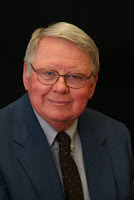 This week's guest blogger, Jess Steven Hughes is a newly published historical author, already working hard on his next two novels. And why not? He's certainly got the research covered! Here's a peek into how such a writer prepares for the dive into not just one but two ancient civilizations to make his story come alive.
This week's guest blogger, Jess Steven Hughes is a newly published historical author, already working hard on his next two novels. And why not? He's certainly got the research covered! Here's a peek into how such a writer prepares for the dive into not just one but two ancient civilizations to make his story come alive. Over the years I have accumulated a personal library of more than five hundred books on Celtic, Classical, Medieval, and Middle Eastern history which I use in the research and writing of my historical novels. This does not include various magazines, journals and other papers that I have collected, not to mention using the internet for the same purpose. I am always acquiring more information in an effort to make my novels as authentic as possible.
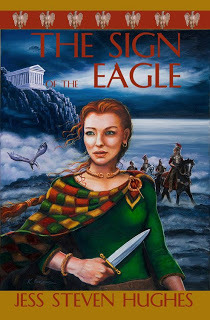 Before I wrote my first historical novel,
The Sign of the Eagle
, and the two novels I am currently writing, I had to learn the fundamentals of writing fiction as opposed to writing history. This included plot, characterization, scene, setting, dialogue, descriptive narration, the difference between showing and telling, and so on. Only after I had attended writing seminars and workshops for several years did my abilities as an author of novels finally emerge.. Always keep in mind that I write, first and foremost, fiction; I don't write history. I use historical events and backdrops for my stories. The Sign of the Eagle, recently published by Sunbury Press, is an example. The story takes place in Milan and Rome in 71 A.D. The main character, Macha, is a Celtic woman married to a Roman officer, Titus. He has been wrongfully accused of treason and conspiring to assassinate the Emperor Vespasian. Macha must almost single-handedly prove his innocence. Historians have speculated there were several conspiracies against the life of Emperor Vespasian, but only two appear to have been recorded, as found in The Twelve Caesars by Suetonius or in The Histories by Cassius Dio. Therefore, my story is a fictionalized account of one possible unrecorded attempt on Vespasian's life. I wrote it from what I believe to be a different perspective using an unlikely protagonist, a Celtic woman. Why not? Before I could fully develop The Sign of the Eagle—the characters, plotting, setting, scene, dialogue, etc.—I started by researching the overall history of the Roman Empire and the Celtic world. Such books included, among many others:Michael Grant, History of RomeM. Rostovtzeff, RomeH.H. Scullard, From the Gracchi to NeroJohn Peddie, Invasion: the Roman Conquest of Britain
Before I wrote my first historical novel,
The Sign of the Eagle
, and the two novels I am currently writing, I had to learn the fundamentals of writing fiction as opposed to writing history. This included plot, characterization, scene, setting, dialogue, descriptive narration, the difference between showing and telling, and so on. Only after I had attended writing seminars and workshops for several years did my abilities as an author of novels finally emerge.. Always keep in mind that I write, first and foremost, fiction; I don't write history. I use historical events and backdrops for my stories. The Sign of the Eagle, recently published by Sunbury Press, is an example. The story takes place in Milan and Rome in 71 A.D. The main character, Macha, is a Celtic woman married to a Roman officer, Titus. He has been wrongfully accused of treason and conspiring to assassinate the Emperor Vespasian. Macha must almost single-handedly prove his innocence. Historians have speculated there were several conspiracies against the life of Emperor Vespasian, but only two appear to have been recorded, as found in The Twelve Caesars by Suetonius or in The Histories by Cassius Dio. Therefore, my story is a fictionalized account of one possible unrecorded attempt on Vespasian's life. I wrote it from what I believe to be a different perspective using an unlikely protagonist, a Celtic woman. Why not? Before I could fully develop The Sign of the Eagle—the characters, plotting, setting, scene, dialogue, etc.—I started by researching the overall history of the Roman Empire and the Celtic world. Such books included, among many others:Michael Grant, History of RomeM. Rostovtzeff, RomeH.H. Scullard, From the Gracchi to NeroJohn Peddie, Invasion: the Roman Conquest of BritainI continued with geographical locations. I narrowed down the story to Milan, Rome and the Italian country side. A sample of the books I used includes:Muir's Historical Atlas: Ancient and Classical, edited by R.F. Treharne and Harold Fullard;Tim Cornell and John Matthews, Atlas of the Roman World Peter Connolly and Hazel Dodge, The Ancient City: Life in Classical Athens and Rome
I also had to consider historical events that occurred prior to those in my novel which were important to the story's background. Among these I included the great civil war of 69 A.D. known as the Year of the Four Emperors (Galba, Otho, Vitellius and Vespasian). For this I referred to these books in particular:Kenneth Wellesley, The Long Year A.D. 69Michael Grant, The Twelve CaesarsSuetonius, The Twelve CaesarsMichael Grant, The Army of the Caesars
In my story, Macha's husband Titus fought in this war against the forces of the short-lived Emperor Vitellius at the Battle of Cremona. Titus was part of one of Vespasian's advanced units. Other events included the invasion of Britannia in 43 A.D. and the eventual capture of the British Chieftain, Caratacus, Macha's father (see above Invasion, etc). He was brought to Rome along with his wife and Daughter and ultimately pardoned by the Emperor Claudius. We don't know the daughter's actual name, I chose a good Celtic name, Macha. Caratacus was ultimately pardoned and disappeared from history, but there was no reason why I could not use his daughter for a story. For her background, I described her growing up being Romanized but clinging to many Celtic customs. Prior to the story, she married Titus, who was born in Rome. His parents were Gauls, but his father was a Roman Senator, one of the first Gauls admitted to the Senate under the Emperor Claudius Because I used a Celtic protagonist, I had to research Celtic as well as Roman customs of daily living, the role of women in the Celtic and Roman worlds, the gulf between the classes, slavery, religion, the military (Celt and Roman), descriptions of city life, especially, in Rome, etc. My research for these topics included: W.S. Davis, A Day in Old Rome by Jerome Carcopino, Daily Life in Ancient Rome Jacqueline Morely, A Roman Villa Juvenal, The Sixteen Satires The Epigrams of Martial, James Michie, translator Petronius, The Satyricon Sarah B. Pomeroy, Goddesses, Whores, Wives and Slaves: Women in Classical Antiquity Peter B. Ellis, Celtic Women: Women in Celtic Society and Literature Miranda Green, The Gods of the Celts Ruth and Vincent Megaw, Celtic Art Adrian Goldsworthy, The Complete Roman Army Karen Dixon, The Roman Cavalry P.K. Baillie Reynolds, The Vigiles of Imperial Rome Stephen Allen and Wayne Reynolds, Fighting Elite: Celtic Warrior 300 B.C. – A.D. 100
It was only after I had conducted sufficient research that I finally wrote my story. However, I wasn't finished. I had to run the gauntlet of two writers groups, The Spokane Novelists and The Spokane Writers Group, which month after month reviewed and bled all over my chapters until the manuscript finally met their expectations. Even then I wasn't through. I sent my manuscript to a "book doctor," an editor who had spent many years with Harper-Collins before going into private business. Fortunately, she is a very ethical person (there are some real charlatans out there) who was very thorough and answered all my subsequent questions after she had reviewed and returned my novel for more work. My efforts paid off. After many rejection slips, The Sign of the Eagle was accepted for publication. If you are interested in learning more about The Sign of the Eagleplease check out my website http://www.jessstevenhughes.com.
Published on March 06, 2013 01:00
February 27, 2013
It's Magic, Not Rocket Science
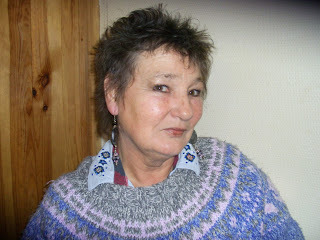 My guest this week is author Ailsa Abraham, with a point of view on living with magic you may not have thought of. (I have preserved her British spelling because I wanted to.)
My guest this week is author Ailsa Abraham, with a point of view on living with magic you may not have thought of. (I have preserved her British spelling because I wanted to.)
I'm grateful to Maggie for inviting me to contribute today as both of us write about magic. So I would like to take a look at how our attitude to magic has changed in the last half century or so. I'm fortunate enough to be hurtling towards my 60s, and when I was a child the words “witch” and “magic” conjured up images of a wizened old crone, warty hooked nose, pointy hat, stirring her cauldron and muttering evil spells.
This always struck me as a little unfair as I come from a traditional family of witches although even amongst ourselves that word was considered pejorative. We “had the Sight” was about all we would say of ourselves. We followed traditions handed down through generations, we read the cards and we knew when people were going to die. We were healers and “soul friends” — the ones to whom the others come for tea and sympathy, knowing that their secrets will go no further. Sometimes that is the most healing thing of all — to unburden to a third party who will listen without comment, offer no advice but allow a spilling-out of all the unwanted baggage. We talk a great deal about detox but perhaps what my family has been doing all this time was allowing a detox of the spirit.
Shoot on to now and we have Harry Potter, Sabrina the Teenage Witch, and Buffy the Vampire Slayer et al. Magic and witchcraft have become not only acceptable but desirable. How did this come about? How come my mother had to use her own status as a threat when I was being bullied at school,
“I'm a witch and if you continue to beat Ailsa up, I will turn you into a toad and you into a cat so you can eat him! Do you HEAR me?”
(She was a bit formidable my mother!) and after that we were pretty well shunned by the rest of our community in a small Scottish town. Now, however, every wee lassie who can slip on the velvet, weigh her neck down with sigils, and wear a ring on every finger can call herself a witch and expect to be taken seriously? In sixty years? How so?
It started with Gerald Gardener in the 1950s resurrecting some old traditions, cobbling them together with his Masonic rites and calling it Wicca. Sorry, chaps, but that is the truth. Modern day paganism can claim no more foundation in “ancient wisdom” than any other belief system. What my family practised was merely a repetition of actions carried on from mother to daughter with very little reasoning of why or wherefore. My grandmother, a fearsome witch, was also a strong Calvinist who respected the Sabbath. She would have been affronted by any talk of gods and goddesses.
The truth lies somewhere in-between. I am now a practising Shaman and I can tell you that the link through the ages is that nebulous notion of “Spirit” a word used by Quakers too. Christians call it God or the Holy Spirit. Native Americans call it the Great Spirit Each religion has its own name but the idea is the same. It is the reaching back to the caves of our ancestors and trying to make contact with their concept of living with Nature. Witchcraft, magic is no more than making contact with the idea that we are part of this planet and we have to share it with all other life forms, animal, plant, mineral. Respect for each other engenders a more fluid way of living. Contact and renewed contact each day with the spirit of all living things around us teaches an acceptance of the cycle of life, birth, death, decay, rebirth. Acceptance of that banishes fear. Lack of fear gives the courage to try to change things.
It isn't rocket science. It's natural force – it's magic. Changing for the better.
Published on February 27, 2013 01:00
February 20, 2013
One Thing Leads to Another: Grace Elliot
My guest this week, and all for your delight, is the delightful Grace Eliot, another British author (am I sensing a trend here?) I think you'll enjoy. Here's her answer to the classic question: Where do ideas come from?

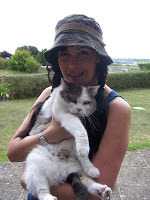 Have you ever noticed how one thing leads to another? As a writer, I find this is often the case. I love living in the past, and by this I mean visiting the places where my ancestors once walked; to touch the fabrics they once wore and look through the same window glass as an orphan at the Foundling Hospital. To climb the same sweeping staircase as kings at Kensington Palace, gives a real sense of the past…and ideas, lots of ideas. One of my hobbies is to visit places of historic interest. One of my favourites is the Foundling Museum, London, where the sense of closeness to the past is amazing. I think this is because many of the artefacts were left by the desperate mothers whose babies were brought up here; these scraps of fabric and half coins, the heart-rending tokens the means of reclaiming a child should the mother's circumstances change. These set me thinking about charitable values in Georgian England and how a foundling might make their way in life (fodder for #3 The Huntley Trilogy: Verity's Lie, and also #1 Foxhall series: Percy Persephone.) And talking of one thing leading to another, the idea for Hope's Betrayal came from a family holiday on the Isle of Wight. Whilst exploring a quaint fishing village on the south coast, I spotted a cottage where an 18th century female smuggler once lived. (This woman led a remarkable life and eventually married into the French aristocracy, but that's another story!) Inspired to find out more about her I visited a local second hand book shop. Bingo! In this gloriously musty bookshop, not only did I unearth a pamphlet published in the 1920s about this woman's adventures, but I eavesdropped on a conversation between two sales assistants that gave me the perfect character for a short story. But I digress, to return to the smuggler, it transpires that she was so beautiful when a custom's officer caught her red-handed, he was so entranced he let her go free (I'm deliberately being a tease and withholding her name, because one day I may write her life story.) As for one thing leading to another, it set me wondering about what would happen if two people with very different values fell in love. For instance, what would an upright naval officer, who lived and breathed duty, do if he fell in love with a law-breaker, such as a female smuggler? And thus, the idea behind Hope's Betrayal was born.
Have you ever noticed how one thing leads to another? As a writer, I find this is often the case. I love living in the past, and by this I mean visiting the places where my ancestors once walked; to touch the fabrics they once wore and look through the same window glass as an orphan at the Foundling Hospital. To climb the same sweeping staircase as kings at Kensington Palace, gives a real sense of the past…and ideas, lots of ideas. One of my hobbies is to visit places of historic interest. One of my favourites is the Foundling Museum, London, where the sense of closeness to the past is amazing. I think this is because many of the artefacts were left by the desperate mothers whose babies were brought up here; these scraps of fabric and half coins, the heart-rending tokens the means of reclaiming a child should the mother's circumstances change. These set me thinking about charitable values in Georgian England and how a foundling might make their way in life (fodder for #3 The Huntley Trilogy: Verity's Lie, and also #1 Foxhall series: Percy Persephone.) And talking of one thing leading to another, the idea for Hope's Betrayal came from a family holiday on the Isle of Wight. Whilst exploring a quaint fishing village on the south coast, I spotted a cottage where an 18th century female smuggler once lived. (This woman led a remarkable life and eventually married into the French aristocracy, but that's another story!) Inspired to find out more about her I visited a local second hand book shop. Bingo! In this gloriously musty bookshop, not only did I unearth a pamphlet published in the 1920s about this woman's adventures, but I eavesdropped on a conversation between two sales assistants that gave me the perfect character for a short story. But I digress, to return to the smuggler, it transpires that she was so beautiful when a custom's officer caught her red-handed, he was so entranced he let her go free (I'm deliberately being a tease and withholding her name, because one day I may write her life story.) As for one thing leading to another, it set me wondering about what would happen if two people with very different values fell in love. For instance, what would an upright naval officer, who lived and breathed duty, do if he fell in love with a law-breaker, such as a female smuggler? And thus, the idea behind Hope's Betrayal was born.
 an excerpt from Hope's Betrayal
an excerpt from Hope's Betrayal
by Grace ElliotCaptain Huntley Makes a Discovery About his Prisoner
 Alone with his prisoner the Captain set to work, his face all harsh angles in the lamplight. First to stem the bleeding. Working with deft hands, he pulled the bloodstained scarf from the felon's head. Surprise registered, as he noted the delicate ears and elegant neck. The boy’s hair gleamed like polished-coal in the lamplight; tied back in a pony tail, black-as-the-devil’s heart. Huntley reached for a rag to wipe blood from the boy's eyes and cheek. Soft skin emerged from beneath the clotted mess. The boy was young…a round face with pointed chin, a tipped nose …and lips, softly parted and provocatively plump….just ripe for kissing. A flush of heat warmed Huntley's cheeks. What was he thinking? Wiping his sleeve across his eyes he forced himself to continue. He bathed the laceration, cleaning away sand and blood. Something about this lad had stirred deep emotions and the captain didn’t like it one little bit. He glanced toward the door, not wanting to be alone with the smuggler and these strange feelings he stirred. “What the devil's taking that wench so long?” The fire was crackling nicely now, steam rising from the lad's clothes. But it wasn’t warm enough; cold could kill every bit as much as blood loss. ”Hell's teeth, do I have to do everything myself?” With rising irritation, Huntley set to stripping the lad of his wet clothes. He peeled back the patched jacket, twice its weight with water, and dropped it to the floor. A patched and frayed shirt, sticky with blood, clung to the lad’s lean frame. Huntley tugged the shirt-tail free of the lad’s sodden breeches and off over his head, with the result that the Captain's pulse raced alarmingly. “Get a grip, man.” Huntley muttered. The lad had unexpectedly slim shoulders, a silver stiletto strapped to his thin upper arm. “Naughty.” Unsheathing the knife he held the elegant blade toward the firelight; a finely crafted weapon of silver filigree over an ivory handle— a lady’s weapon, and obviously expensive. “Who did you steal this from, then?” Placing the stiletto safely out of reach, he turned back to the table. Stripped of his shirt, it seemed the lad had broken ribs, for his chest was strapped. The bindings were soaked and must come off. Shifting the unconscious lad into a sitting position, balancing him against his shoulder, Huntley unwound the bandages. As he lay the lad back down on the table, Huntley was suddenly struck by the peculiar shadows playing across the boy’s chest. A flush of blood heated his cheeks. That explained a lot! Huntley’s mouth dropped open; he threw back his head and laughed aloud with relief. “'Tis not a lad….but a lass!” Alone in the scullery with a half-naked girl…no, not a girl, for she had the soft curves of a woman. Huntley took a step back. The sense of relief was overwhelming, that it was a woman who had excited his body so. He looked around for someone to share his astonishment, but the maid had not yet returned. In his experience women were tiresome, wearisome creatures that sapped the spirit and drained the mind, but he studied this one with interest. Dark lashes lay brushed against her cheek, an almost catlike tilt to her closed eyes. Her skin was clear, fresh, and unblemished. Her face was wide, round even, but with a pointed chin and a nose turned up at the end. In all he decided, she was beautiful with the stubbornness of a mule and fragility of a china doll. She had been a worthy advisory on the dunes; agile, brave and resourceful and it thrilled him to the core. Lost in thought, Huntley shrugged off his outer coat and covered her over, then removed himself to a respectable distance. Nothing had changed, he told himself. She was a felon and would pay the penalty demanded by law. And if Huntley felt uneasy at the prospect he suppressed the emotion, it was just that he had to get used to the notion of interrogating a woman.
Alone with his prisoner the Captain set to work, his face all harsh angles in the lamplight. First to stem the bleeding. Working with deft hands, he pulled the bloodstained scarf from the felon's head. Surprise registered, as he noted the delicate ears and elegant neck. The boy’s hair gleamed like polished-coal in the lamplight; tied back in a pony tail, black-as-the-devil’s heart. Huntley reached for a rag to wipe blood from the boy's eyes and cheek. Soft skin emerged from beneath the clotted mess. The boy was young…a round face with pointed chin, a tipped nose …and lips, softly parted and provocatively plump….just ripe for kissing. A flush of heat warmed Huntley's cheeks. What was he thinking? Wiping his sleeve across his eyes he forced himself to continue. He bathed the laceration, cleaning away sand and blood. Something about this lad had stirred deep emotions and the captain didn’t like it one little bit. He glanced toward the door, not wanting to be alone with the smuggler and these strange feelings he stirred. “What the devil's taking that wench so long?” The fire was crackling nicely now, steam rising from the lad's clothes. But it wasn’t warm enough; cold could kill every bit as much as blood loss. ”Hell's teeth, do I have to do everything myself?” With rising irritation, Huntley set to stripping the lad of his wet clothes. He peeled back the patched jacket, twice its weight with water, and dropped it to the floor. A patched and frayed shirt, sticky with blood, clung to the lad’s lean frame. Huntley tugged the shirt-tail free of the lad’s sodden breeches and off over his head, with the result that the Captain's pulse raced alarmingly. “Get a grip, man.” Huntley muttered. The lad had unexpectedly slim shoulders, a silver stiletto strapped to his thin upper arm. “Naughty.” Unsheathing the knife he held the elegant blade toward the firelight; a finely crafted weapon of silver filigree over an ivory handle— a lady’s weapon, and obviously expensive. “Who did you steal this from, then?” Placing the stiletto safely out of reach, he turned back to the table. Stripped of his shirt, it seemed the lad had broken ribs, for his chest was strapped. The bindings were soaked and must come off. Shifting the unconscious lad into a sitting position, balancing him against his shoulder, Huntley unwound the bandages. As he lay the lad back down on the table, Huntley was suddenly struck by the peculiar shadows playing across the boy’s chest. A flush of blood heated his cheeks. That explained a lot! Huntley’s mouth dropped open; he threw back his head and laughed aloud with relief. “'Tis not a lad….but a lass!” Alone in the scullery with a half-naked girl…no, not a girl, for she had the soft curves of a woman. Huntley took a step back. The sense of relief was overwhelming, that it was a woman who had excited his body so. He looked around for someone to share his astonishment, but the maid had not yet returned. In his experience women were tiresome, wearisome creatures that sapped the spirit and drained the mind, but he studied this one with interest. Dark lashes lay brushed against her cheek, an almost catlike tilt to her closed eyes. Her skin was clear, fresh, and unblemished. Her face was wide, round even, but with a pointed chin and a nose turned up at the end. In all he decided, she was beautiful with the stubbornness of a mule and fragility of a china doll. She had been a worthy advisory on the dunes; agile, brave and resourceful and it thrilled him to the core. Lost in thought, Huntley shrugged off his outer coat and covered her over, then removed himself to a respectable distance. Nothing had changed, he told himself. She was a felon and would pay the penalty demanded by law. And if Huntley felt uneasy at the prospect he suppressed the emotion, it was just that he had to get used to the notion of interrogating a woman.
 Find Hope's Betrayal on Amazon
Find Hope's Betrayal on Amazon
One wild, winter's night two worlds collide. Known for his ruthless efficiency, Captain George Huntley is sent to stamp out smuggling on the south coast of England. On a night raid, the Captain captures a smuggler, but finds his troubles are just beginning when the lad turns out to be a lass, Hope Tyler. With Hope as bait, the Captain sets a trap to catch the rest of the gang. But in a battle of wills, with his reputation at stake, George Huntley starts to respect feisty, independent Hope. Challenged by her sea-green eyes and stubborn loyalty Huntley now faces a new threat—his growing attraction to a sworn enemy. But a love where either Hope betrays her own kind, or Captain Huntley is court-marshaled, is not an easy destiny to follow.
Amazon US Amazon UK

 Have you ever noticed how one thing leads to another? As a writer, I find this is often the case. I love living in the past, and by this I mean visiting the places where my ancestors once walked; to touch the fabrics they once wore and look through the same window glass as an orphan at the Foundling Hospital. To climb the same sweeping staircase as kings at Kensington Palace, gives a real sense of the past…and ideas, lots of ideas. One of my hobbies is to visit places of historic interest. One of my favourites is the Foundling Museum, London, where the sense of closeness to the past is amazing. I think this is because many of the artefacts were left by the desperate mothers whose babies were brought up here; these scraps of fabric and half coins, the heart-rending tokens the means of reclaiming a child should the mother's circumstances change. These set me thinking about charitable values in Georgian England and how a foundling might make their way in life (fodder for #3 The Huntley Trilogy: Verity's Lie, and also #1 Foxhall series: Percy Persephone.) And talking of one thing leading to another, the idea for Hope's Betrayal came from a family holiday on the Isle of Wight. Whilst exploring a quaint fishing village on the south coast, I spotted a cottage where an 18th century female smuggler once lived. (This woman led a remarkable life and eventually married into the French aristocracy, but that's another story!) Inspired to find out more about her I visited a local second hand book shop. Bingo! In this gloriously musty bookshop, not only did I unearth a pamphlet published in the 1920s about this woman's adventures, but I eavesdropped on a conversation between two sales assistants that gave me the perfect character for a short story. But I digress, to return to the smuggler, it transpires that she was so beautiful when a custom's officer caught her red-handed, he was so entranced he let her go free (I'm deliberately being a tease and withholding her name, because one day I may write her life story.) As for one thing leading to another, it set me wondering about what would happen if two people with very different values fell in love. For instance, what would an upright naval officer, who lived and breathed duty, do if he fell in love with a law-breaker, such as a female smuggler? And thus, the idea behind Hope's Betrayal was born.
Have you ever noticed how one thing leads to another? As a writer, I find this is often the case. I love living in the past, and by this I mean visiting the places where my ancestors once walked; to touch the fabrics they once wore and look through the same window glass as an orphan at the Foundling Hospital. To climb the same sweeping staircase as kings at Kensington Palace, gives a real sense of the past…and ideas, lots of ideas. One of my hobbies is to visit places of historic interest. One of my favourites is the Foundling Museum, London, where the sense of closeness to the past is amazing. I think this is because many of the artefacts were left by the desperate mothers whose babies were brought up here; these scraps of fabric and half coins, the heart-rending tokens the means of reclaiming a child should the mother's circumstances change. These set me thinking about charitable values in Georgian England and how a foundling might make their way in life (fodder for #3 The Huntley Trilogy: Verity's Lie, and also #1 Foxhall series: Percy Persephone.) And talking of one thing leading to another, the idea for Hope's Betrayal came from a family holiday on the Isle of Wight. Whilst exploring a quaint fishing village on the south coast, I spotted a cottage where an 18th century female smuggler once lived. (This woman led a remarkable life and eventually married into the French aristocracy, but that's another story!) Inspired to find out more about her I visited a local second hand book shop. Bingo! In this gloriously musty bookshop, not only did I unearth a pamphlet published in the 1920s about this woman's adventures, but I eavesdropped on a conversation between two sales assistants that gave me the perfect character for a short story. But I digress, to return to the smuggler, it transpires that she was so beautiful when a custom's officer caught her red-handed, he was so entranced he let her go free (I'm deliberately being a tease and withholding her name, because one day I may write her life story.) As for one thing leading to another, it set me wondering about what would happen if two people with very different values fell in love. For instance, what would an upright naval officer, who lived and breathed duty, do if he fell in love with a law-breaker, such as a female smuggler? And thus, the idea behind Hope's Betrayal was born.  an excerpt from Hope's Betrayal
an excerpt from Hope's Betrayalby Grace ElliotCaptain Huntley Makes a Discovery About his Prisoner
 Alone with his prisoner the Captain set to work, his face all harsh angles in the lamplight. First to stem the bleeding. Working with deft hands, he pulled the bloodstained scarf from the felon's head. Surprise registered, as he noted the delicate ears and elegant neck. The boy’s hair gleamed like polished-coal in the lamplight; tied back in a pony tail, black-as-the-devil’s heart. Huntley reached for a rag to wipe blood from the boy's eyes and cheek. Soft skin emerged from beneath the clotted mess. The boy was young…a round face with pointed chin, a tipped nose …and lips, softly parted and provocatively plump….just ripe for kissing. A flush of heat warmed Huntley's cheeks. What was he thinking? Wiping his sleeve across his eyes he forced himself to continue. He bathed the laceration, cleaning away sand and blood. Something about this lad had stirred deep emotions and the captain didn’t like it one little bit. He glanced toward the door, not wanting to be alone with the smuggler and these strange feelings he stirred. “What the devil's taking that wench so long?” The fire was crackling nicely now, steam rising from the lad's clothes. But it wasn’t warm enough; cold could kill every bit as much as blood loss. ”Hell's teeth, do I have to do everything myself?” With rising irritation, Huntley set to stripping the lad of his wet clothes. He peeled back the patched jacket, twice its weight with water, and dropped it to the floor. A patched and frayed shirt, sticky with blood, clung to the lad’s lean frame. Huntley tugged the shirt-tail free of the lad’s sodden breeches and off over his head, with the result that the Captain's pulse raced alarmingly. “Get a grip, man.” Huntley muttered. The lad had unexpectedly slim shoulders, a silver stiletto strapped to his thin upper arm. “Naughty.” Unsheathing the knife he held the elegant blade toward the firelight; a finely crafted weapon of silver filigree over an ivory handle— a lady’s weapon, and obviously expensive. “Who did you steal this from, then?” Placing the stiletto safely out of reach, he turned back to the table. Stripped of his shirt, it seemed the lad had broken ribs, for his chest was strapped. The bindings were soaked and must come off. Shifting the unconscious lad into a sitting position, balancing him against his shoulder, Huntley unwound the bandages. As he lay the lad back down on the table, Huntley was suddenly struck by the peculiar shadows playing across the boy’s chest. A flush of blood heated his cheeks. That explained a lot! Huntley’s mouth dropped open; he threw back his head and laughed aloud with relief. “'Tis not a lad….but a lass!” Alone in the scullery with a half-naked girl…no, not a girl, for she had the soft curves of a woman. Huntley took a step back. The sense of relief was overwhelming, that it was a woman who had excited his body so. He looked around for someone to share his astonishment, but the maid had not yet returned. In his experience women were tiresome, wearisome creatures that sapped the spirit and drained the mind, but he studied this one with interest. Dark lashes lay brushed against her cheek, an almost catlike tilt to her closed eyes. Her skin was clear, fresh, and unblemished. Her face was wide, round even, but with a pointed chin and a nose turned up at the end. In all he decided, she was beautiful with the stubbornness of a mule and fragility of a china doll. She had been a worthy advisory on the dunes; agile, brave and resourceful and it thrilled him to the core. Lost in thought, Huntley shrugged off his outer coat and covered her over, then removed himself to a respectable distance. Nothing had changed, he told himself. She was a felon and would pay the penalty demanded by law. And if Huntley felt uneasy at the prospect he suppressed the emotion, it was just that he had to get used to the notion of interrogating a woman.
Alone with his prisoner the Captain set to work, his face all harsh angles in the lamplight. First to stem the bleeding. Working with deft hands, he pulled the bloodstained scarf from the felon's head. Surprise registered, as he noted the delicate ears and elegant neck. The boy’s hair gleamed like polished-coal in the lamplight; tied back in a pony tail, black-as-the-devil’s heart. Huntley reached for a rag to wipe blood from the boy's eyes and cheek. Soft skin emerged from beneath the clotted mess. The boy was young…a round face with pointed chin, a tipped nose …and lips, softly parted and provocatively plump….just ripe for kissing. A flush of heat warmed Huntley's cheeks. What was he thinking? Wiping his sleeve across his eyes he forced himself to continue. He bathed the laceration, cleaning away sand and blood. Something about this lad had stirred deep emotions and the captain didn’t like it one little bit. He glanced toward the door, not wanting to be alone with the smuggler and these strange feelings he stirred. “What the devil's taking that wench so long?” The fire was crackling nicely now, steam rising from the lad's clothes. But it wasn’t warm enough; cold could kill every bit as much as blood loss. ”Hell's teeth, do I have to do everything myself?” With rising irritation, Huntley set to stripping the lad of his wet clothes. He peeled back the patched jacket, twice its weight with water, and dropped it to the floor. A patched and frayed shirt, sticky with blood, clung to the lad’s lean frame. Huntley tugged the shirt-tail free of the lad’s sodden breeches and off over his head, with the result that the Captain's pulse raced alarmingly. “Get a grip, man.” Huntley muttered. The lad had unexpectedly slim shoulders, a silver stiletto strapped to his thin upper arm. “Naughty.” Unsheathing the knife he held the elegant blade toward the firelight; a finely crafted weapon of silver filigree over an ivory handle— a lady’s weapon, and obviously expensive. “Who did you steal this from, then?” Placing the stiletto safely out of reach, he turned back to the table. Stripped of his shirt, it seemed the lad had broken ribs, for his chest was strapped. The bindings were soaked and must come off. Shifting the unconscious lad into a sitting position, balancing him against his shoulder, Huntley unwound the bandages. As he lay the lad back down on the table, Huntley was suddenly struck by the peculiar shadows playing across the boy’s chest. A flush of blood heated his cheeks. That explained a lot! Huntley’s mouth dropped open; he threw back his head and laughed aloud with relief. “'Tis not a lad….but a lass!” Alone in the scullery with a half-naked girl…no, not a girl, for she had the soft curves of a woman. Huntley took a step back. The sense of relief was overwhelming, that it was a woman who had excited his body so. He looked around for someone to share his astonishment, but the maid had not yet returned. In his experience women were tiresome, wearisome creatures that sapped the spirit and drained the mind, but he studied this one with interest. Dark lashes lay brushed against her cheek, an almost catlike tilt to her closed eyes. Her skin was clear, fresh, and unblemished. Her face was wide, round even, but with a pointed chin and a nose turned up at the end. In all he decided, she was beautiful with the stubbornness of a mule and fragility of a china doll. She had been a worthy advisory on the dunes; agile, brave and resourceful and it thrilled him to the core. Lost in thought, Huntley shrugged off his outer coat and covered her over, then removed himself to a respectable distance. Nothing had changed, he told himself. She was a felon and would pay the penalty demanded by law. And if Huntley felt uneasy at the prospect he suppressed the emotion, it was just that he had to get used to the notion of interrogating a woman. Find Hope's Betrayal on Amazon
Find Hope's Betrayal on Amazon One wild, winter's night two worlds collide. Known for his ruthless efficiency, Captain George Huntley is sent to stamp out smuggling on the south coast of England. On a night raid, the Captain captures a smuggler, but finds his troubles are just beginning when the lad turns out to be a lass, Hope Tyler. With Hope as bait, the Captain sets a trap to catch the rest of the gang. But in a battle of wills, with his reputation at stake, George Huntley starts to respect feisty, independent Hope. Challenged by her sea-green eyes and stubborn loyalty Huntley now faces a new threat—his growing attraction to a sworn enemy. But a love where either Hope betrays her own kind, or Captain Huntley is court-marshaled, is not an easy destiny to follow.
Amazon US Amazon UK
Published on February 20, 2013 01:00
February 13, 2013
David W. Robinson: Where Murder Happens
 David W. Robinson is the author of, among many other things, one of a series of cozy mysteries with all the charm of the best British whodunits, topped with a particular Northern twist both in style and attitude. Today I've asked David to tell us how he makes the world of his amateur sleuth, Joe Murray, come alive even for those of us who may never have lived in his part of the world.
David W. Robinson is the author of, among many other things, one of a series of cozy mysteries with all the charm of the best British whodunits, topped with a particular Northern twist both in style and attitude. Today I've asked David to tell us how he makes the world of his amateur sleuth, Joe Murray, come alive even for those of us who may never have lived in his part of the world. Creating the LocationWhen I first decided to write the STAC Mystery series, I decided that the settings would be real locations throughout Great Britain. From Somerset to North Yorkshire, Merseyside to Lincolnshire, they’re places I have visited often and know well.It wasn’t difficult. STAC is the acronym for the Sanford 3rd Age Club: a group of born again teenagers, all in their middle years, with enough time and money to enjoy frequent weekend outings to all parts of the UK.But Sanford, their hometown, doesn’t exist. It is a construct of my imagination.That wasn’t a problem. Sanford is the setting for so little of the individual novels that I needed only a skimpy overview of the town: the location of The Lazy Luncheonette (Joe Murray’s café) a couple of pubs and one or two roads leading to the nearby motorway was enough.
Creating the LocationWhen I first decided to write the STAC Mystery series, I decided that the settings would be real locations throughout Great Britain. From Somerset to North Yorkshire, Merseyside to Lincolnshire, they’re places I have visited often and know well.It wasn’t difficult. STAC is the acronym for the Sanford 3rd Age Club: a group of born again teenagers, all in their middle years, with enough time and money to enjoy frequent weekend outings to all parts of the UK.But Sanford, their hometown, doesn’t exist. It is a construct of my imagination.That wasn’t a problem. Sanford is the setting for so little of the individual novels that I needed only a skimpy overview of the town: the location of The Lazy Luncheonette (Joe Murray’s café) a couple of pubs and one or two roads leading to the nearby motorway was enough.
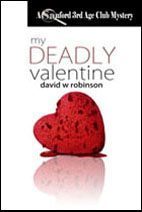 When I came to the sixth STAC Mystery, My Deadly Valentine (Crooked Cat, 2013), the nature of the story meant that it had to take place in Sanford, and in turn that meant I had to put meat on the bare bones of this non-existent town. And it’s surprising what you have to think about when you set out on this quest.The people are easy. I grew up in a mining area, and even though the pits are a thing of the past, the people have changed little. Cheery and welcoming on the one hand, blunt, outspoken and challenging on the other.Sanford is a mining town. Correction: Sanford was a mining town. The colliery is history, along with the nearby iron foundry, which went the same way as the British steel industry. Sanford, therefore, faced the same problems many real towns had to contend with—switching from manufacturing to a service-based economy, and the knock-on effect of the town’s major employee ceasing to be.
When I came to the sixth STAC Mystery, My Deadly Valentine (Crooked Cat, 2013), the nature of the story meant that it had to take place in Sanford, and in turn that meant I had to put meat on the bare bones of this non-existent town. And it’s surprising what you have to think about when you set out on this quest.The people are easy. I grew up in a mining area, and even though the pits are a thing of the past, the people have changed little. Cheery and welcoming on the one hand, blunt, outspoken and challenging on the other.Sanford is a mining town. Correction: Sanford was a mining town. The colliery is history, along with the nearby iron foundry, which went the same way as the British steel industry. Sanford, therefore, faced the same problems many real towns had to contend with—switching from manufacturing to a service-based economy, and the knock-on effect of the town’s major employee ceasing to be.And what of the town itself?The landscape of such places has changed over the last thirty years. In the outer suburbs the small bungalows, with their well-tended gardens, mostly built in the Thirties, Forties and Fifties, remain largely untouched, but around the site of the old mine, many of the run down terraces of small miners’ houses are gone, replaced by smart, modern, family homes. And yet, enough of the old housing stock remains to create a varied, if sometimes, disjointed look to the streets. The town centre has seen the biggest change. The old High Street, a mix of nationally-known and local shops and businesses, is a thing of the past. There’s a degree of homogeneity about our towns and cities these days, beginning with the shopping mall. Everywhere has one, and once inside, while the architecture and art may differ, the names above the shop doorways remain the same.The malls are usually given a name synonymous with the town’s history. Therefore, where I live now, the economy was based on cotton, and our shopping mall is known as Spindles. In keeping with this, when I dreamt up Sanford’s mall, I named it The Gallery. A gallery is the name given to a coal seam in a mine.The final touch to creating Sanford, was the outdoor market, surrounded by older, Victorian buildings which have been turned over to budding entrepreneurs. It’s a familiar enough sight in Great Britain.Market traders have a tough time of things, and visitors to any street market will find at least one secondhand dealer selling anything from furniture, TVs and technology, to china ornaments. As well as playing a small role in the developing drama of My Deadly Valentine, Mort Norris was created to fill this gap. There’s more than a hint of Del Boy Trotter about Mort. He’s a wise trader; one who knows that everything, no matter how old, no matter how ragged or rusty, has a value. A man with a sharp eye, Mort can give Joe a hint or two about the victim’s past, while passing off a china piece as Meissen instead of Mason.Although Sanford is only the backdrop to the story, anyone who knows such places will feel immediately at home there. But for me, creating an entire town is not something I’d like to repeat, and for the next STAC Mystery, we’re going back to the seaside.

David W Robinson is a novelist and freelance writer based in Manchester, England.The STAC Mysteries is a series of traditional British cozy-crime novels. My Deadly Valentine, the 6th STAC Mystery is available for the Kindle at http://www.amazon.co.uk/dp/B00B9HHF8I(for Amazon worldwide, change “.co.uk” to “.com”) and in all formats from Smashwords at http://www.smashwords.com/books/view/281516and in mobi, epub and pdf directly from Crooked Cat Books
Published on February 13, 2013 01:00
February 6, 2013
Maria Grace: Tea Time–Buyer Beware
As any of my friends will assure you, tea is a drink for refined tastes, a symbol of fine manners and serene afternoons. But was it always? Maria Grace has the real story.
You can never get a cup of tea large enough or a book long enough to suit me. ~C.S. Lewis
 C.S. Lewis might have rethought his statement had he considered what might be actually sitting in the teacup of his ancestors only one hundred years before.
C.S. Lewis might have rethought his statement had he considered what might be actually sitting in the teacup of his ancestors only one hundred years before.
Since its introduction into English society by Catherine of Braganza in 1662, tea was an expensive commodity, due to the cost of importing the tea and the taxes levied upon it. The cheapest grades of tea might be found for 5 to 6 shillings per pound. The best grades could cost as much as 20 shillings or more a pound. In 1800 a year’s supply of tea and sugar could cost a family of six nearly as much as their yearly rent. At that time it was usually kept under lock and key, to protect it from pilfering by the servants.
The desire of the masses for more affordable tea and the desire of merchants to increase their profits led to a lucrative trade in smuggled tea. Richard Twinning, founder of the Twinning Tea Company, estimated at least half of the tea drunk in England was smuggled. In 1820, tea was one of the two most smuggled commodities, the other being liquor.
To make the smuggled tea even more lucrative, many smugglers adulterated the tea with other substances. Green teas were generally thought easier to taint, so public preference shifted to black tea. Not to be outsmarted by wary consumers, unscrupulous merchants found ways to stretch black tea supplies with both used tea leaves, colorants, and other contaminants.
Used tea leaves were readily available. In wealthy households, tea leaves would be used several times, passing through the household hierarchy. First the family brewed and drank of it. Then the used leaves would be given to the servants to brew and drink. Finally they would end up in the hands of a high ranking servant, cook or housekeeper who, as part of her contract, would be entitled to the used leaves. She would dry and sell them to a char woman or directly to poorer families for as much as a shilling a pound.
 Char women might resell the used leaves to a slop shop that would then process them for reuse. The leaves were stiffened with a solution of gum, colored with green vitriol (iron sulfate) or black lead or log wood and combined with fresh tea leaves. Willow, licorice and sloe leaves might also be added to further extend the mixture.
Char women might resell the used leaves to a slop shop that would then process them for reuse. The leaves were stiffened with a solution of gum, colored with green vitriol (iron sulfate) or black lead or log wood and combined with fresh tea leaves. Willow, licorice and sloe leaves might also be added to further extend the mixture.
Fake tea called ‘smouch’ or sometimes ‘British tea’ was also widely available and cheap. Counterfeit green tea could be produced from thorn or ash leaves, steeped in green vitriol or verdigris (copper acetate) and dried. These dyes were toxic and could produce a variety of symptoms including constipation. Imitation black tea often contained the same hawthorn, ash and sloe leaves. It might also be a mixture of bran and animal dung or ‘chamber lye’ (the contents of a chamber pot). Dried and ground these were said to strongly resemble fashionable Bohea tea in appearance if not in flavor. Some estimates suggested up to three million pounds (weight) of these mixtures were produced a year. So while most of the nation drank ‘tea’, the contents of many tea cups might not have been so pleasant as the drinker might have wished. And since there were no controls over the contents, it was indeed a case of Buyer Beware!
 Resourceshttp://www.bl.uk/reshelp/findhelpregion/asia/china/guidesources/chinatrade/index.htmlhttp://www.britainexpress.com/History/tea-in-britain.htmFullerton, Susannah. Jane Austen & Crime Horn, Pamela. Flunkeys and Scullions, Life Below Stairs in Georgian England . Sutton Publishing (2004)Murray, Venetia. An Elegant Madness Penguin Books (1998)Olsen, Kirstin. Cooking with Jane Austen Greenwood Press (2005)Wilson, Kim. Tea with Jane Austen Jones Books (2004)
Resourceshttp://www.bl.uk/reshelp/findhelpregion/asia/china/guidesources/chinatrade/index.htmlhttp://www.britainexpress.com/History/tea-in-britain.htmFullerton, Susannah. Jane Austen & Crime Horn, Pamela. Flunkeys and Scullions, Life Below Stairs in Georgian England . Sutton Publishing (2004)Murray, Venetia. An Elegant Madness Penguin Books (1998)Olsen, Kirstin. Cooking with Jane Austen Greenwood Press (2005)Wilson, Kim. Tea with Jane Austen Jones Books (2004)
 Get to know Maria GraceThough Maria Grace has been writing fiction since she was ten years old, those early efforts happily reside in a file drawer and are unlikely to see the light of day again, for which many are grateful.
Get to know Maria GraceThough Maria Grace has been writing fiction since she was ten years old, those early efforts happily reside in a file drawer and are unlikely to see the light of day again, for which many are grateful.
She has one husband, two graduate degrees and two black belts, three sons, four undergraduate majors, five nieces, six cats, seven Regency-era fiction projects and notes for eight more writing projects in progress. To round out the list, she cooks for nine in order to accommodate the growing boys and usually makes ten meals at a time so she only cooks twice a month.
You can contact her at [email protected]. On Facebook: facebook.com/AuthorMariaGrace On Amazon.com: amazon.com/author/mariagraceVisit her website at AuthorMariaGrace.comOn Twitter @WriteMariaGraceOn Pinterest http://pinterest.com/mariagrace423/
Maria's books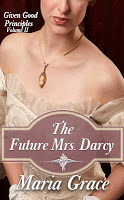
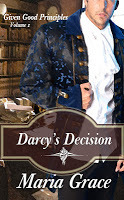 Darcy’s DecisionAmazon: http://www.amazon.com/dp/B006VZOSCO
Darcy’s DecisionAmazon: http://www.amazon.com/dp/B006VZOSCO
The Future Mrs. DarcyKindle: http://www.amazon.com/dp/B008H5UBEU
You can never get a cup of tea large enough or a book long enough to suit me. ~C.S. Lewis
 C.S. Lewis might have rethought his statement had he considered what might be actually sitting in the teacup of his ancestors only one hundred years before.
C.S. Lewis might have rethought his statement had he considered what might be actually sitting in the teacup of his ancestors only one hundred years before.Since its introduction into English society by Catherine of Braganza in 1662, tea was an expensive commodity, due to the cost of importing the tea and the taxes levied upon it. The cheapest grades of tea might be found for 5 to 6 shillings per pound. The best grades could cost as much as 20 shillings or more a pound. In 1800 a year’s supply of tea and sugar could cost a family of six nearly as much as their yearly rent. At that time it was usually kept under lock and key, to protect it from pilfering by the servants.
The desire of the masses for more affordable tea and the desire of merchants to increase their profits led to a lucrative trade in smuggled tea. Richard Twinning, founder of the Twinning Tea Company, estimated at least half of the tea drunk in England was smuggled. In 1820, tea was one of the two most smuggled commodities, the other being liquor.
Two primary types of tea were available: green and black. Both forms of tea begin with the same leaves, but they were processed differently. Green tea leaves are roasted as soon as they are gathered to prevent fermentation. Black tea leaves are allowed to ferment for some time. The brown/black color and flavor develop during fermentation. Roasting stops the process. Typically different types of tea leaves would be combined to produce tasty blends for consumers.
To make the smuggled tea even more lucrative, many smugglers adulterated the tea with other substances. Green teas were generally thought easier to taint, so public preference shifted to black tea. Not to be outsmarted by wary consumers, unscrupulous merchants found ways to stretch black tea supplies with both used tea leaves, colorants, and other contaminants.
Used tea leaves were readily available. In wealthy households, tea leaves would be used several times, passing through the household hierarchy. First the family brewed and drank of it. Then the used leaves would be given to the servants to brew and drink. Finally they would end up in the hands of a high ranking servant, cook or housekeeper who, as part of her contract, would be entitled to the used leaves. She would dry and sell them to a char woman or directly to poorer families for as much as a shilling a pound.
 Char women might resell the used leaves to a slop shop that would then process them for reuse. The leaves were stiffened with a solution of gum, colored with green vitriol (iron sulfate) or black lead or log wood and combined with fresh tea leaves. Willow, licorice and sloe leaves might also be added to further extend the mixture.
Char women might resell the used leaves to a slop shop that would then process them for reuse. The leaves were stiffened with a solution of gum, colored with green vitriol (iron sulfate) or black lead or log wood and combined with fresh tea leaves. Willow, licorice and sloe leaves might also be added to further extend the mixture.Fake tea called ‘smouch’ or sometimes ‘British tea’ was also widely available and cheap. Counterfeit green tea could be produced from thorn or ash leaves, steeped in green vitriol or verdigris (copper acetate) and dried. These dyes were toxic and could produce a variety of symptoms including constipation. Imitation black tea often contained the same hawthorn, ash and sloe leaves. It might also be a mixture of bran and animal dung or ‘chamber lye’ (the contents of a chamber pot). Dried and ground these were said to strongly resemble fashionable Bohea tea in appearance if not in flavor. Some estimates suggested up to three million pounds (weight) of these mixtures were produced a year. So while most of the nation drank ‘tea’, the contents of many tea cups might not have been so pleasant as the drinker might have wished. And since there were no controls over the contents, it was indeed a case of Buyer Beware!
 Resourceshttp://www.bl.uk/reshelp/findhelpregion/asia/china/guidesources/chinatrade/index.htmlhttp://www.britainexpress.com/History/tea-in-britain.htmFullerton, Susannah. Jane Austen & Crime Horn, Pamela. Flunkeys and Scullions, Life Below Stairs in Georgian England . Sutton Publishing (2004)Murray, Venetia. An Elegant Madness Penguin Books (1998)Olsen, Kirstin. Cooking with Jane Austen Greenwood Press (2005)Wilson, Kim. Tea with Jane Austen Jones Books (2004)
Resourceshttp://www.bl.uk/reshelp/findhelpregion/asia/china/guidesources/chinatrade/index.htmlhttp://www.britainexpress.com/History/tea-in-britain.htmFullerton, Susannah. Jane Austen & Crime Horn, Pamela. Flunkeys and Scullions, Life Below Stairs in Georgian England . Sutton Publishing (2004)Murray, Venetia. An Elegant Madness Penguin Books (1998)Olsen, Kirstin. Cooking with Jane Austen Greenwood Press (2005)Wilson, Kim. Tea with Jane Austen Jones Books (2004)
 Get to know Maria GraceThough Maria Grace has been writing fiction since she was ten years old, those early efforts happily reside in a file drawer and are unlikely to see the light of day again, for which many are grateful.
Get to know Maria GraceThough Maria Grace has been writing fiction since she was ten years old, those early efforts happily reside in a file drawer and are unlikely to see the light of day again, for which many are grateful.She has one husband, two graduate degrees and two black belts, three sons, four undergraduate majors, five nieces, six cats, seven Regency-era fiction projects and notes for eight more writing projects in progress. To round out the list, she cooks for nine in order to accommodate the growing boys and usually makes ten meals at a time so she only cooks twice a month.
You can contact her at [email protected]. On Facebook: facebook.com/AuthorMariaGrace On Amazon.com: amazon.com/author/mariagraceVisit her website at AuthorMariaGrace.comOn Twitter @WriteMariaGraceOn Pinterest http://pinterest.com/mariagrace423/
Maria's books

 Darcy’s DecisionAmazon: http://www.amazon.com/dp/B006VZOSCO
Darcy’s DecisionAmazon: http://www.amazon.com/dp/B006VZOSCOThe Future Mrs. DarcyKindle: http://www.amazon.com/dp/B008H5UBEU
Published on February 06, 2013 06:00
January 30, 2013
Under the Volcano with T. E. MacArthur
 This week I sat down with T.E. MacArthur--who I know best as Thena--to talk about her debut novel The Volcano Lady (Treasure Line 2012), the delights of history, and the challenges of writing about a character who fits into her own time as much as she challenges it: a very proper English lady of the 1880s with an advanced degree in geology--a more than usually masculine field.
This week I sat down with T.E. MacArthur--who I know best as Thena--to talk about her debut novel The Volcano Lady (Treasure Line 2012), the delights of history, and the challenges of writing about a character who fits into her own time as much as she challenges it: a very proper English lady of the 1880s with an advanced degree in geology--a more than usually masculine field.
MS-A: You’ve obviously had to do some serious research into both geology and the history of the science for The Volcano Lady. Which came first, the research or the decision to write a novel?
TEM: Oddly enough, I think they lay dormant, together, for quite a long time (all puns intended.) I can’t say if there has ever been a time when I wasn’t doing some sort of writing and volcanoes have fascinated me since I was little. If I had to choose the Chicken or the Egg, I’d say that the novel came first. My understanding of geology overall was modern. For The Volcano Lady, I needed to research what Victorians knew. I had a bit of luck in finding a first edition of Professor John Wesley Judd’s Volcanoes: What They Are and What They Teach (1881.) Once the story was building I knew the next subject I needed to study was Krakatoa. Happily, the Royal Society published an 1888 report, The Eruption of Krakatoa and Subsequent Phenomena. Here I could get a look at how Victorians experienced the cataclysmic event as well as an amazing example of how Victorians approached documentation and scientific inquiry.
The first concept I had to drop was the theory of plate tectonics. These days we have a marvelous understanding of continental movement due to radar imaging (a World War II development), deep sea exploration (again, mid to late 20th Century), and GPS. When Yellowstone National Park (classified as a super volcano) has an increase in ground elevation or the lava dome in Mt. St. Helens grows by centimeters, we can track that. We have proof of plate tectonics. During my character Lettie Gantry’s time, most geologists were still debating whether the earth was solid to the core or not. Jules Verne’s Journey to the Center of the Earth was based on the concept that there were continent-sized caverns under the ground, bored out of the solid earth. He went so far as to have his characters go into an Icelandic volcano only to come out in Italy. A suggestion that the crust moved would have been laughable to Victorian scientists. Earthquakes were measurable on a graph, but why they happened was not yet known. The last 150 years have been the boom time for the science of geology, but for Lettie and her peers, the science was just getting started.
MS-A: Is there a trick to using the research without making the reader feel like they're siting in a geology lecture?
TEM: As opposed to my answer to the question above? Ha! In the case any novel, the focus should be on the characters. Remembering that the events and the science guide a character’s actions and decisions but that ultimately they respond uniquely, can help substantially. The hard part is really in editing out the science so that you don’t spend more time on it than characterization. One of the most painful cuts I made was in a scene between Lettie and Professor Pierce. He had just read some material on geology so that when he met her he could show off a bit. They had a very Vernian scientific debate over the Uniformitarian Theory. I won’t bore you with a definition of that term for the same reason I couldn’t bring myself to bore the reader with it: it didn’t move the story along and it didn’t create the relationship I wanted between Pierce and Lettie. I read the scene without it and the scene didn’t lose impact or importance.
I have been told that after reading the novels, some folks have come away with a better understanding of geology or its importance. I take that as a compliment. It was tempting though to over-explain things or to have Lettie actually create Plate Tectonic Theory 100 years before its time. That is a fault I see in historical fantasy, whether Sci Fi or Steampunk. We want our heroes to be so good, so smart, so like us, we often write them as modern thinkers with almost superhuman abilities to create theories that cannot be supported by the technology and knowledge of the period. I gave Lettie a little bit of this by allowing her to formulate her Floating Raft Hypothesis – that the continents float like icebergs. Scientifically, it’s wrong but it suggests that she is not limiting herself to what those around her commonly accept. And people like that in a hero – thinking outside the box and a little ahead of the norm, but only to a point. I believe that if I had her creating Plate Tectonic Theory, it would have made her unbelievable.
MS-A: You have created some wonderful characters, both heroes and villains. (I’ll admit I’m a little bit in love with Tom Turner myself!) What do you do to make characters interesting to readers?
TEM: I fall in love with them. Or I want to become them. Then I write the adventure I wish I had, were I Lettie Gantry. Or the intimate moment I wish I had with Tom Turner. Not every writer will create characters that resonate with every reader. My thought is that if I can make them whole and complete to me, I am empowered to present them as whole and complete to the reader. From there, the reader may chose for himself whether he likes this person or not.
That works well for heroes and sometimes villains, but with villains you have to be careful. You have to decide what kind of villain you want: someone so vile you have to hate him or one you actually understand and sympathize with. Or, someone in between. Readers of fantasy and adventure want someone to hate and blame for the terrible causes of the hero’s journey. But, I believe today’s reader is looking for more than just an all-bad guy. They want a complex character who has a reason for why he is the way he is. Was it his mother abusing him, the death of a loved one, or a residual anger for the outcome of war that did not favor him? For a budding writer who wants to go beyond the Snidely Whiplash villain, I recommend Bullies, Bastards & Bitches by Jessica Morrell. Changed my whole outlook on the bad guy. It also ruined my ability to just sit through movies and not pick apart how their villain was designed.
Making your historical characters fit in their time period is another way to keep your reader interested. This is tough with women characters from the Victorian age. Women were dramatically limited by the rules of society. They had to behave in prescribed ways. I believe that what gives Lettie an edge as a character is that she is thoroughly Victorian and yet appealing to modern readers. She struggles against misogyny without disconnecting her from the environment she must live in – that created who she is. I have difficulty reading historical stories where the female lead entirely bucks the system and faces no consequences. I feel such portrayals show someone who is entirely disengaged with the time period. Maybe a woman could walk into a saloon in Tombstone, but once she’s done that, she can’t expect to get a room at the high class hotel (they wouldn’t allow her in) or apply for a job outside of said saloon. Victorians would assume she was less than a lady and shun her. Thus Lettie behaves as a lady would while straining the boundaries of academia. A significant inspiration for Lettie was the real life Dr. Elizabeth Blackwell, the first American woman to graduate from medical school.
MS-A: Have you thought about how you will cast the Volcano Lady‘s characters when it’s time to make the movie?
TEM: A tough question. When I visualized many characters, I tapped people I’d met – often more than one per character. Some are an homage to friends who have been supportive or inspirational. Tom Turner was visually designed on an actor, so too Christopher Moore. I think that I would be open to who might play the characters, but with a strong requirement that no one be under 35 years old. One of my motivations for writing the Volcano Lady series was to present to the Steampunk fans characters who were more than thin, model pretty, 18 year olds. Frankly, I wanted to design a character like me, including age. I would be horrified if the cast was made up of today’s 20-something actors. Tom is a civil war veteran in the 1880s – doing the math leaves him in his 40s. And I didn’t want a young Lettie either – she has a doctorate and years of field study which the math won’t support if she’s 22. I believe that while Hollywood has discounted most women over 30, the average Steampunk lady fan is not a fit for the 18-25 young male subset Hollywood seems to cater to. Looking around Sci Fi and Steampunk conventions, I can assure you that more than 50% are female and beyond voting age.
MS-A: I've just been enjoying the first of your Penny Dreadfuls. How would you describe a "penny dreadful", and what do you find so appealing about it as a story-telling device?
TEM: I am calling The Yankee Must Die series a “penny dreadful” or “dime novel” for the fun of it. It feels right for a Steampunk series. The Victorians devoured dime novels, dreadfuls, and pulp magazines weekly. And some of them really were dreadful. Looking back in time at them, the whole idea of melodramatic, good vs. bad, virtually implausible escapist stories seems rather charming. George Lucas based his wildly successful Indiana Jones movies on the Saturday matinee serials that were the grandchildren of those Victorian penny dreadfuls, and modern audiences still can’t get enough of it. My cover artist, S.N. Jacobson (www.snjacobson.com), has been researching dime novels of the 1880s for the cover design. We’re even thinking of adding a snake oil sales pitch on the back cover, as was often done. There is a sense of innocence, simplistic heroism, and cliffhanger excitement to that genre. It has been incredibly fun to write.
MS-A: I know that you started this series without having given any thought to what genre it might be—it was just the story you wanted to write. Your stories are historical and a little romantic as well as fantastical. What are your about genre in general and as applied to your story?
TEM: I keep using the term Steampunk as I think it best fits. Steampunk is a subgenre of Sci Fi – Fantasy. It bases itself in the Victorian age and asks the question: what if? What if a self propelled submarine with deep diving capacity had been created? What if large scale airships were possible? What might the Victorian age, or the Age of Steam, have been like if one or two things had changed? Some Steampunk is, like The Volcano Lady, a combination of solid historical details (I do tweak a couple of events, I confess) and technology that might have been. Some Steampunk goes so far as to change the history almost completely, often due to a technological breakthrough that historically did not happen, which Mark Hodder does exceptionally well in his Burton & Swinburne books. Steampunk can be many things so long as it keeps in mind the basis on which it builds: the Victorian era. I occasionally call The Volcano Lady a gaslight romance, but that is not quite a genre found in Amazon – yet.MS-A: What do you like most about your writing? What do you want people to take from it?TEM: Perhaps it is because I am a product of the late 20th Century that I have come to a point where the cynicism and downbeat mood in many books has become cliché if not irritating. I refuse to have vampires, werewolves, or zombies – that’s been done to death. I miss the action adventure where you have fun. I’d love to see matinee serials and pulp magazines become more than just a nostalgic fad. We seem to be missing our innocence, which is odd for me to say because the very journey Lettie Gantry takes results in the loss of some of her innocence but never her sense of wonder. Can we be awed by the Universe and yet see it without innocence? I don’t know. Maybe, like thousands of writers before and after me, I‘ll explore that question through Lettie.
MS-A: What can we look for as the next step for you?TEM: On February 15th, I am releasing the first Yankee Must Die story, Huaka’i po (the Nightmarchers) , set in the Kingdom of Hawai’i. This story is packed with erupting volcanoes, pirates, kings, and ancient Hawaiian ghosts. As a thank you to all those who supported the first Volcano Lady novels, the story will be available as a free PDF download. Naturally, one should only download and read, not redistribute for sale. For those who don’t have e-readers or can’t take advantage of the PDF file, there will be e-books and paperbacks on Amazon – at a small charge which I fear I cannot avoid. Fingers crossed that later this year, after a fact finding mission to Iceland, I will be able to release the third Volcano Lady novel, currently titled The Great Earthquake Machine .There are two Steampunk conventions on my calendar: Clockwork Alchemy on Memorial Day Weekend, in San Jose, CA, and SteamCon V, October, in Seattle, WA. I plan/hope to be conducting writer’s workshops. By no means am I ready to become a Professor of American Literature, but I know there are some wheels that don’t need to be re-invented. If I can share some of my experience to help another writer, I’m happy to. Thank you so much Maggie for inviting me to share your blog.

An excerpt from The Yankee Must Die: The Gaslight Adventures of Tom Turnerby T. E. MacArethur
Date unknown, 1884March? Was it Spring yet?Location unknown. Arizona – or was it Colorado?
Tom Turner slammed his fists as hard as possible into the boards that covered him. They rattled slightly; the iron nails were loosening. Dust dropped onto his face and he turned his head, desperate to keep his eyes and nose clear. The cough could not be stifled. He grasped at his breath and held it. No sound beyond a relentless rolling of wheels on ill-travelled road.They hadn’t heard him – yet.
Noises of thumping wood or creaking boards could be natural in a rattling wagon, but the human cough was a giveaway that Turner was awake.Carefully, he allowed shallow, almost useless breaths to steal into his lungs. Someone cursed as their horse slipped on the gravel.The narrowest beam of light slid through a tiny gap between the rough planks that matched the length of his body. There were, perhaps, only five inches between his nose and the wood. There was a small amount of room on either side of him, but his feet touched one end of the box and strands of his hair snagged on the splintering boards only an inch beyond his head. God, he needed to breathe clean air. The cold alone was going to kill him.* The box, and anything near it, jolted hard as the wagon hit rocks, dropped into holes, and generally struck every deformation in the road. Gravel popped out from under the wheels and hooves. Mules protested the rugged road and steep terrain. The road to where? He’d been unconscious when they’d put him in the box and nailed it shut. When he’d woken to the sound of arguing voices, he’d fought the natural urge to scream, to curse them, to pound his fists against the thick pine that sealed him inside and to claw his way out. He wanted to fight. He wanted to run. He needed out! Damn it, he needed more air! Primal voices in his head shrieked - he couldn’t stay in that confined space. His imagination raced toward a vision that the next moments would include dirt being piled on top of him, a shovel full at a time – every man’s worst nightmare – being buried alive. Clean air, his lungs craved air! Instead, the box had been lifted up and unceremoniously dumped on the back of a wagon.So he wasn’t going to be buried – not at that moment – not yet. It was hardly a relief, but it was a chance. Turner knew chances when he saw them and, to save his own life, he couldn’t fail to take advantage of them. The military man within him took over his insane thoughts. He knew not to make another sound unless he could get away with it. He bit into the gag still stuffed inside his mouth and forced each effort to shift his weight to be smooth – silent. They could never know he was awake. They would make carless mistakes if they thought he was no danger to them. His hands were still bound, and so too were his legs as far as he could tell; he couldn’t move them. He would need to free himself, but without alerting his captors. Assassins, more correctly.* He had little time left. It took nothing to guess that the box he lay in was meant to serve first as a prison, then as a coffin. It smelled like a coffin. Moldy pine. Freshly dug dirt. The stench of a former occupant. The air was thick. Yet, as each wagon wheel bounced along the poor road, into some deep gully, or slid sideways in thick sand, he knew the box was not well made. The road was getting rougher – which meant he was getting farther and farther away from human habitation and the means to help himself. Rocks smashed under the weight of the wagon as it rolled over them, or snapped out from under the wheels to scatter noisily across the land. Hands still held together in front of him, he pounded them against the box again and again, more often hitting at an angle to the wood, raising a welt or cut on his skin, bruising them. The loud road noise was covering his attempts, but he didn’t know how long the trip would be – would he have enough time to weaken the lid of his coffin?More loose dirt and dust fell from the lid and down onto his face. Turner wiped it away as best he could. The cold was as stifling as any heat wave and foul air made it worse.One of the wagon drivers called out to a man who was, by the sound of things, riding a horse nearby. Their destination was in sight. There “it” was, one of them cried out. Turner had no remaining time. Twice more he rammed his hands into the lid. Each time it lifted slightly, allowing streaks of light inside, but seemed to lock back down into place and sink him into darkness. Damn thing was made too well. His head was pounding. His chest felt as though it would explode. The wagon stopped.The conversation was muffled but some words were distinguishable. “Mineshaft.” “Played out.” “Abandoned.”* Turner’s box was pulled off the wagon and dropped onto the ground, the impact caused his once-healed ribs to burn and too much air to escape his lungs. The box was lifted by the three men, who complained about the work incessantly. He couldn’t see them. Shadows occasionally blotted out the light seeping in through the cracks. They were moving quickly and not in unison. Inside the box, Turner kept banging into the sides, bouncing back and forth as they half dragged, half carried his coffin away from the wagon. Sound and fractional light changed to complete darkness and echoes. The temperature plunged dramatically. They were inside … something ... a mineshaft. “He ain’t big, why’s he so heavy?” “Shut up! We ain’t got far to go. They couldn’ pump fast enough and the whole thing ‘er filled. Been like that all o’re the place. Ain’t no more money in Tombstone. No more silver. Jus’ whores ’n drunk cowboys.” “Was’ wrong with that?”Tombstone. Arizona Territory? That made little sense. Of course, he’d been in Colorado. He’d met Sherman and Tesla there. How did he get to Arizona? If these men worked for the lingering elements of the Confederacy entrenched on the coast and hiding south of the U.S. border, then they were taking him to Mexico. Yet, Tombstone wasn’t a logical place to be … too many people … too much “civilization” … something else was going on. Why a mineshaft? Were they going to kill him, then why kidnap him? Why would they kill someone they had been taking out of the country at some risk? Or was it even the Confederates? Dear God, was it Pierre Jules Hetzel - again? His captors stopped. Turner braced himself and listened. Would they bury him now? Would they bother? Two of the three were complaining too much to go to the effort of digging a hole. Would they just leave him there, thinking he could not get out? After everything he’d lived through, could his luck still be that good? Damn it, he hadn’t survived this long – against all the odds – to die like this.The box was stood on end, head down, dragged, and then pushed over an edge. It rolled twice on the steep decline then dropped onto its back and slid down the last of the slope, splashing foot first into water and mud without sinking. The water flooded into his box up to his waist. This time, a curse burst out of his lungs, only muffled slightly by the gag. The water was icy. “He’s awake.” “Don’ matter none.” “It’s stuck – it ain’t sinkin’,” the third man shouted, an echo of his voice warbling for a moment after. “Well, I ain’t goin’ down there to un-stick it. It’s movin’ anyway.” And the box was. Slowly, but unquestionably, it was moving. Turner stopped fighting. Every movement simply freed the box in the mud and allowed it to sink further with more water rushing in. Think! Get free –get out. Damn it, he was a sailor and could swim. God the water was ice. His legs were going numb. “We’re done ‘ere. We did our job.” Their footsteps away from him were distinct, accentuated by cracking gravel and curses at how hard it was to walk up and out. They continued to argue with one another until neither their voices nor wagon could be heard. Slow the breathing. Deeper. Control. Pounding heartbeats and ringing filled his ears. His body shook from the cold. Slowly.Slowly. There’s a chance – think! Idiots. Amateurs. Anyone with any sense would know not to walk away until the job was really done. The trouble with having been a covert operator during the War was that Tom Turner had to do things he would have preferred not to – dubious things - but when he had to, he did it thoroughly. And he learned this concept so well that even sitting in freezing water his mind mocked the men who had left him there, not dead yet. Sloppy. Never walk away until you know the body is lifeless and properly disposed of. The box slipped five inches lower before sticking in the mud again. The water line was up to his chest and making his breathing more difficult than it already was. A sailor’s worst nightmare – drowning. Perhaps, after all, they had done their job well enough?
to be continued...!
Published on January 30, 2013 06:00
January 23, 2013
Nancy Jardine: Plot first? Characters? Or what?
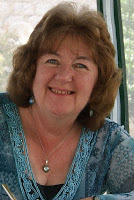 Please welcome Scottish author Nancy Jardine to Writer Wednesday while she talks about writing her latest novel, an ancestral adventure called Topaz Eyes.
Please welcome Scottish author Nancy Jardine to Writer Wednesday while she talks about writing her latest novel, an ancestral adventure called Topaz Eyes.
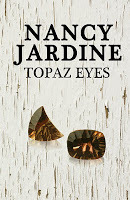 If asked what came first—the chicken or the egg—we know there are many philosophies on that. With regard to a story, is it the story premise that generally comes first? Or the characters? Or what, in fact, triggers the writing process?
If asked what came first—the chicken or the egg—we know there are many philosophies on that. With regard to a story, is it the story premise that generally comes first? Or the characters? Or what, in fact, triggers the writing process? When I started to write my ancestral mystery novel Topaz Eyes (December 2012, Crooked Cat) I had a few aims in mind. The first was to create a story that was based around a complicated ancestral tree. The second was to include some of the fantastic world locations I’ve been fortunate to visit. My third aim was to write a mystery that was more complex than those I’d done before, and my fourth was to write another contemporary novel. My need to develop a more extensive family tree was based on the fact that I love ancestry research; and because I’d already had a first ‘go’ at creating a tree for my debut novel, Monogamy Twist—a sensual, light-hearted version of a Dickensian bequest theme with weird stipulations. I enjoyed creating that first tree so much I really wanted to get my teeth into designing one with more levels. After some erasing and general shifting around of information and dates, I ‘gave birth’ to the family of Geertje Hoogeveen on a large sheet of paper. During the writing process of the novel the tree developed in such a way that I was able to expand the mystery, and I was able to deepen the family connections which hopefully keep the reader guessing till the very end of the story.
Why the need to write about places I’ve visited? I’d included Barcelona, Paris, and a few other destinations in my second novel, Take Me Now. Deciding on those cities was so difficult; there were so many more fantastic places that had begged to be featured. When conceiving the plot for Topaz Eyes, I sat with a world map and decided I would include Heidelberg, Vienna and Amsterdam—locations I adored visiting. My whole story would have a European base but would branch out a bit as well. The other places – Edinburgh, New York, Rochester and Duluth, Minnesota—all appeared during the writing.
My mystery would be a precarious treasure hunt that would send my main characters world-wide in search of it. There would be a long lost set of jewellery—fabulous emeralds once owned by a Mughal emperor—for the protagonists to find and, since my ancestral tree was to third generations, my contemporary cousins would know nothing about each other at the beginning of the quest. To have everyone related by distant blood seemed too boring, so there I devised some characters that do not belong to the progeny of Geertje Hoogeveen. To increase the intensity of the plot, I added dark dimensions by introducing threat and… worse, though the intention was never for the story to be a murderous crime thriller. Which family member is the vilest, the greediest, spices up the mystery.
And to make the plot even more tortuous and stimulating, my distant cousins discover there’s yet another unknown, exceedingly precious item to seek. What is this most mysterious object? And where is it to be found? Those are sneaky twists I built into the story for the reader to guess at. Adding that extra item was incredibly good fun and took more than a little deliberation. I loved tying in all the characters on my fictitious tree. Linking them into the unfolding events took time, and if honest, I have to say a bit of trial and error before all the dates and plot procedures matched up.
Am I now only writing contemporary mysteries? Well, not at present. I’m currently writing a sequel to The Beltane Choice. And I have a very good plot outline done, and around eight thousand words written, for a family saga. Will I need to create a complex family tree for that one? Not really since a lot of it is based on the black sheep amongst my very own ancestors!

Thank you so much, Maggie, for inviting me to talk about how Topaz Eyes came into being. As a lover of history I’m sure you’ll have noted most of my novels have some form of history in them.
 Topaz Eyes
Topaz Eyes A peculiar invitation to Heidelberg embroils Keira Drummond in the search for a mysterious collection of extraordinary jewels once owned by a Mughal Emperor; a hoard that was last known to be in the possession of Amsterdam resident, Geertje Hoogeveen, in 1910.
Who among the progeny of Geertje – hitherto unfamiliar third cousins brought together for the quest – can Keira rely on? Distrust and suspicion among them is rife.
Which one is greedy, and determined enough, to hire thugs to tail her… and worse… as she travels to Vienna and Minnesota? Can Keira even trust Teun Zeger - a Californian she is becoming very drawn to – as they pair up to unearth the jewellery? As they follow a trail of clues, will they uncover the full collection before the hired gun kills them? Details remain furtive and undisclosed until danger and death forces their exposure. And who harbours the ultimate mystery item that is even more precious than the Mughal jewels?
Greed, suspicion and murder are balanced by growing family loyalty, trust, and love.
Topaz Eyes is available in Kindle and and paperback from Amazon UK and Amazon.comOther e-formats from Crooked Cat Books and Smashwords.
Check out the fabulous trailer on YouTube Topaz Eyes
All books by Nancy Jardine: Amazon .com author page: http://amzn.to/RJZzZzAmazon UK author page: http://www.amazon.co.uk/Nancy-Jardine/e/B005IDBIYG/ref=ntt_dp_epwbk_0
 An Excerpt from Topaz Eyes “Would you ditch the mystery, Jensen, and just enlighten me as to what you think I have that interests you? And tell me why you couldn’t have asked for it in the letter you sent to me? I came here of my own free will – granted – but I’m not hanging around any longer if you’re going to drag this out, for I’m damned sure I’ve no idea what you’re referring to.” Jensen’s reply lacked emotion, his face a blank screen, his gaze focused on Teun as Keira regarded the by-play. “Teun. It may come as a surprise to you, but you actually know more about this invitation than Keira. At least you knew from my letter I had something of family interest you might be glad to take back to the USA with you. Keira had no such suggestion made to her.” Tension rose in the room, which didn’t only radiate from Teun. Keira sat uneasy, also unwilling to be in the dark any longer. “Would you please explain why you think I may have something you want, Herr Amsel?” She found herself reluctant to use his first name, considering the antagonism now mounting. “All in good time, Keira. And please call me Jensen. I don’t set out to be anyone’s enemy. I believe each of you can provide access to items belonging to the collection. All the pieces are likely to vary in monetary value but, viewed as a complete entity, it will make an impressive display. It’s a historic set… and unique.”
An Excerpt from Topaz Eyes “Would you ditch the mystery, Jensen, and just enlighten me as to what you think I have that interests you? And tell me why you couldn’t have asked for it in the letter you sent to me? I came here of my own free will – granted – but I’m not hanging around any longer if you’re going to drag this out, for I’m damned sure I’ve no idea what you’re referring to.” Jensen’s reply lacked emotion, his face a blank screen, his gaze focused on Teun as Keira regarded the by-play. “Teun. It may come as a surprise to you, but you actually know more about this invitation than Keira. At least you knew from my letter I had something of family interest you might be glad to take back to the USA with you. Keira had no such suggestion made to her.” Tension rose in the room, which didn’t only radiate from Teun. Keira sat uneasy, also unwilling to be in the dark any longer. “Would you please explain why you think I may have something you want, Herr Amsel?” She found herself reluctant to use his first name, considering the antagonism now mounting. “All in good time, Keira. And please call me Jensen. I don’t set out to be anyone’s enemy. I believe each of you can provide access to items belonging to the collection. All the pieces are likely to vary in monetary value but, viewed as a complete entity, it will make an impressive display. It’s a historic set… and unique.” About Nancy Jardine An ex-primary teacher, Nancy Jardine, lives in the fabulous castle country of Aberdeenshire, Scotland. Her husband mans the kitchen, her offspring only an hour’s drive away. When time permits, ancestry research is an intermittent hobby. Neglecting her large garden in favour of writing, she now grows spectacularly giant thistles. Activity weekends with her extended family are prized since they give her great fodder for new writing.
About Nancy Jardine An ex-primary teacher, Nancy Jardine, lives in the fabulous castle country of Aberdeenshire, Scotland. Her husband mans the kitchen, her offspring only an hour’s drive away. When time permits, ancestry research is an intermittent hobby. Neglecting her large garden in favour of writing, she now grows spectacularly giant thistles. Activity weekends with her extended family are prized since they give her great fodder for new writing.A lover of history, it sneaks into most of her writing along with many of the fantastic world locations she has been fortunate to visit. Her published work to date has been two non-fiction history-related projects, two contemporary ancestral mysteries, one light-hearted contemporary romance mystery, and a historical novel, The Beltane Choice, also published by Crooked Cat.
How to find Nancyhttp://nancyjardine.blogspot.com http://nancyjardinereads.wordpress.com http://nancyjardineauthor.weebly.com http://facebook.com/nancy.jardine.56 Twitter @nansjar As “Nancy Jardine”, she is easy to find at Goodreads, LinkedIn, and Google+
Published on January 23, 2013 00:01
January 16, 2013
Ailsa Abraham: Walking between the Worlds
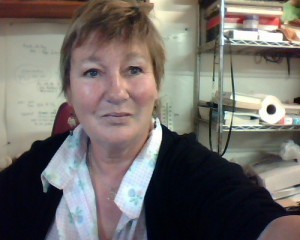
It's Writer Wednesday, and today my guest is Ailsa Abraham, a Brit living in France but often wandering far from the fields we know. Ailsa, why don’t we start with you telling a little bit about your new book!
Shaman’s Drum is a pagan adventure/romance novel which started as my NaNo piece last year and then took a few months to tidy up with a great deal of help from Stephanie at Crooked Cat.
The plot revolves around two lovers from opposite sides of the magical tracks in a world where mainstream religion has been banned and paganism is the norm. Magic use is commonplace but they broke the rules and fell in love. In this book they are offered the chance to redeem themselves by fighting demons and foiling a plot by renegade cultists. The idea came to me in a flash while I was sitting out back chatting with my lizards and the whole of the first scene in the story came to me like a movie clip. I thought that had to go on to a complete story and that was how it all started.
Do you have a favorite character in Shaman's Drum? Apart from Iamo the utterly gorgeous monk and Riga the kick-ass shaman who are the main characters and obviously closest to my heart? Well I'd have to say Dagda who is the Head of the Black Shaman Guild. He's Native American, very cool, has a really dry sense of humour and a mind like a switchblade. He usually has a cigar hanging from his lips that smells faintly of “dreamweed” but he is one powerful shaman!

If you could live within the pages of your book, would you? Oh most definitely. I'm a practicing shaman and healer and I would fit right into that world. There is still a lot of suspicion about “witchcraft” and a lot of misunderstanding of the chanelling of natural energies. It would be fabulous to live in a world where my gifts are accepted as naturally as being able to sing or paint. I'd love to live amongst the characters I've created, too, because obviously I rather like them.
I know you must have plans for more books. Can you tell us about what you have in the works?
Yes. Like a total blithering idiot, once Shaman's Drum was finished I realised that I had written the middle book in a trilogy. Everyone who read the Nano copy commented that they wanted the first adventure as well. That is how Riga and Iamo met and how they end up being in prison at the start of this book. Even people who are not “airy fairy” said they'd love to read how it came about that the mainstream religions could be banned and why. So I'm working on the prequel. And if we have two there has to be a third.
Did you have to do much research while writing Shaman’s Dream? Not for this book, no. I was writing about the things I have lived with all my life. I had to do a certain amount of research on medieval Christian beliefs about demons but that only took me a little time. I write in another genre under another pen name and that takes huge amounts of research to make sure the military background is correct. I enjoy that too.
Would you ever want to write a non-fiction book about the same thing? As far as non-fiction goes, I write about practical shamanism and witchcraft on my blog and some people come to me for advice. I wouldn't want to write a book on it because … because I'm too busy writing fiction!
Everyone has their own story to tell. When did you start writing and what got you started? Ever since I can remember I've been writing stories. As a small child I didn't like the books I was told to read , so I went off and wrote my own. As an adult I constantly wrote stories (even novellas) to amuse my friends. I used to publish them on a blog or just share them around but never thought of submitting them. It was only when the inspirational and amazing Jessica Macbeth bullied me into entering the NaNoWriMo 2011 as her writing buddy, that I found myself with a finished manuscript and thought – why not?
How do you find the time to juggle work, family, writing, and/or everything else you do? Simple answer is that I don't. I was declared an invalid and forced to give up work a couple of years ago. I have a deformation of the spine and Bipolar Disorder and although I tried to continue, my doctors ganged up on me and forced me to accept that I just couldn't go out to work any more. That gave me the time I need to write. As for family, we only have the dogs and when I'm in full-on writing mode, my very accommodating other half takes over.
What do you think drew you to your genre, and what keeps you there? My path. I grew up in a family of hereditary witches so the things we did were just “normal” to me. As an adult I took instruction in a Wiccan coven and got to High Priestess level before leaving to concentrate on shamanic practice. It's what I know. I do write in other genres but this one is closest to my heart.
Just for fun, are you a dog or cat person? I'm an animal person, period. When I lived in the UK I worked as a veterinary nurse. When I was very little I tried to steal an elephant from London Zoo and since then I've had all kinds of animal companions—a bat, ferrets, a raven. I love cats but the two dogs we have now (used to be four!) wouldn't take to kindly to a newcomer.
Aside from reading or writing what is your favorite thing to do with your free time? My selfish pleasure is zooming around the lanes on my motorbike. That's my release valve. I also seem to have acquired an orphanage for homeless teddy bears – St. Ursula's, of course! Some stay forever, others get cleaned up, re-dressed and sent to new and loving homes. They've gone as far as the States!
Somehow I'm also chief knitter around here so I crochet toys for sick children or new babies … don't tell anyone but I put wish-spells in them too, so they're really poppets.
I never get paid in money for healing but my neighbours bring me bucketfuls of green beans, branches of cherries or several pounds of tomatoes as gifts.
Tell me about your secret plan for taking over the world. I don't want to! It's responsibility enough caring for one small village in France. Of course I'm working as a subversive to make magic acceptable through my books. I'm a firm believer in— start with yourself, then with your household, then your street and just quietly plug away at making life better in your little corner. If we all did that, there would be no need for world domination.
Thanks so much, Ailsa, for sharing you thoughts with us.
Ailsa is longing for your (substantive) comments. In fact she’s even willing to part with a copy of Shaman’s Drum to encourage you. Please respond before next Writer Wednesday (1/23/13) to be eligible. Ailsa will announce a winner here on 1/24.
Where can you find Shaman’s Drum ? Amazon.com Amazon.co.uk
 Goodreads
GoodreadsAnd direct from the publisher: Crooked Cat Books
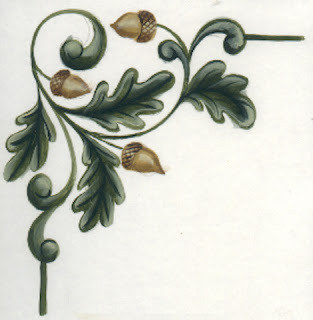
NEXT WEEK:
Nancy Jardine,
Published on January 16, 2013 00:00

